1000 Ways of Seeing: Diverse Art from the Stanley Seeger Collection at SLO
One man’s collection, a testimony to his lifelong quest for the unique, the whimsical and the sublime is to be sold at Sotheby’s, London on 5 – 6 March 2014. The late Stanley Seeger (1930 – 2011) was one of the great collectors of our time; the guardian of beautifully quirky items and profound works of art and craft, that span 250 million years of history. Amongst the wildly diverse assortment of curiosities in 1000 Ways of Seeing is an eclectic variety of carpets and textiles.

ESFAHAN COMPOSITE RUG, CENTRAL PERSIA, MID 17TH CENTURY
wool pile, pieced, now approximately: 181 by 166cm., 5ft 11in by 5ft 5in.
Estimate £2,000 – 4,000

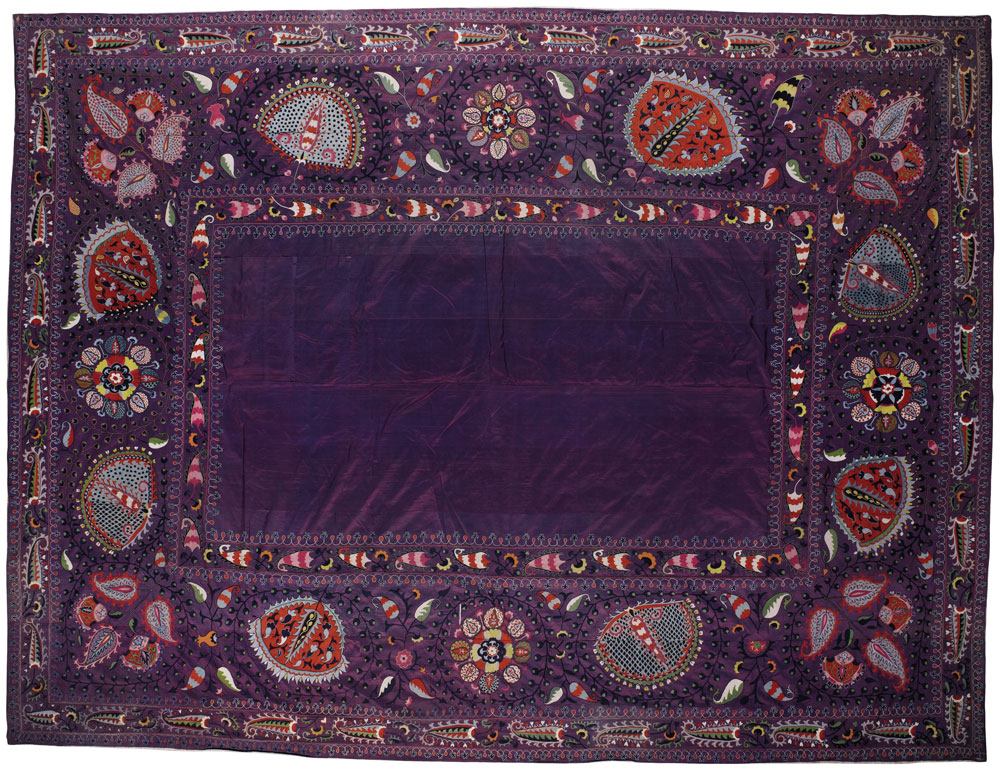
LAKAI SUZANI, UZBEKISTAN, LATE 19TH CENTURY
polychrome silk embroidery on silk ground, 345 by 264cm., 11ft 4in by 8ft 8in.
Estimate £2,000 – 4,000
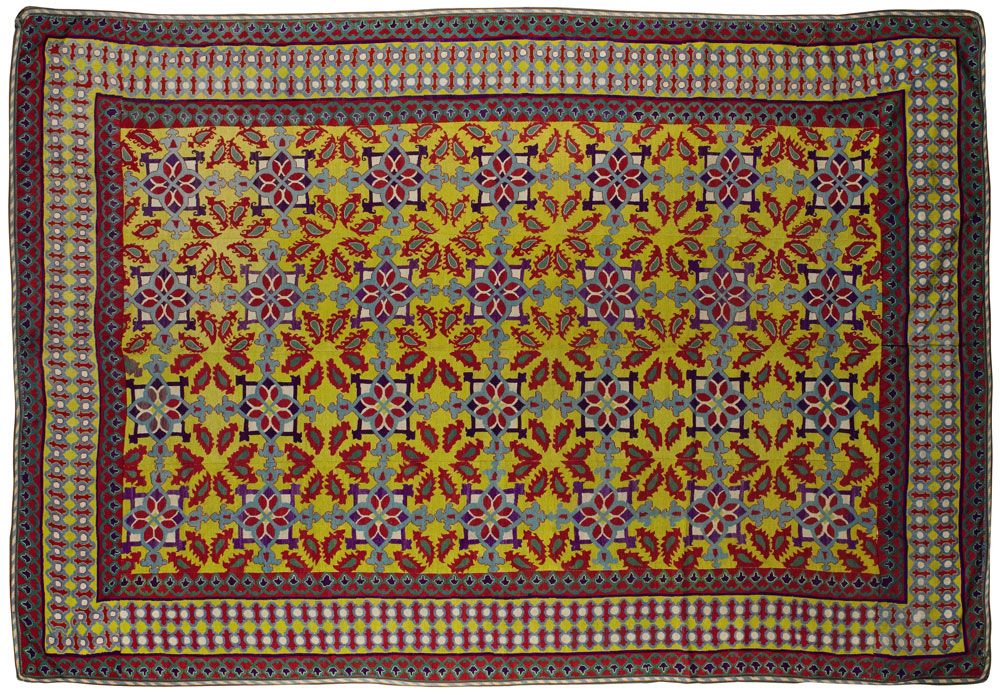
COVER
SHAHRIYSABZ EMBROIDERED COVER, UZBEKISTAN, SECOND HALF 19TH CENTURY
polychrome silk needlework on cotton ground, ikat lining, 282 by 198cm., 9ft 3in by 6ft 6in.
Estimate £1,000 – 1,500
With an independent confidence in his own impeccable taste he went about his collecting with a private enthusiasm; described as a ‘pure collector’ by David Nash (who handled the 1993 sale of Seeger’s 88 Picasso paintings at Sotheby’s, New York), he did not amass his collections with investment in mind. Sir Hugh Casson wrote of his regard of “the chic as a badge of insecurity and the conventional as a sign of surrender”. It is reported that upon his purchase of an unremarkable Picasso painting he explained that “it was so bad, it needed to be taken out of circulation”

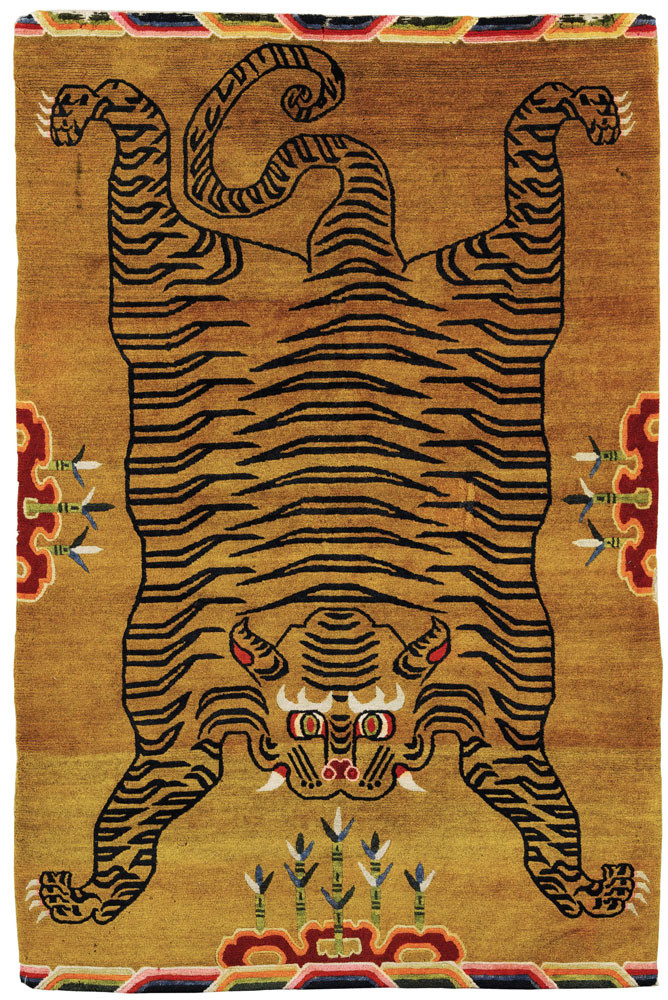
TIGER RUG, TIBET, FIRST QUARTER 20TH CENTURY
wool pile, approximately: 165 by 105cm., 65 by 41in.
Estimate £2,000 – 3,000
Extending into some 75 collecting categories, the 1000 lots will be offered in chronological order, curated into 12 thematic ‘chapters’ beginning with a consignment of 250 million-year-old fossilised trees. Traversing such wildly various and enchanting items as Al Capone’s cocktail shaker, Lord Nelson’s teapot and Orson Welles’ script for Citizen Kane.
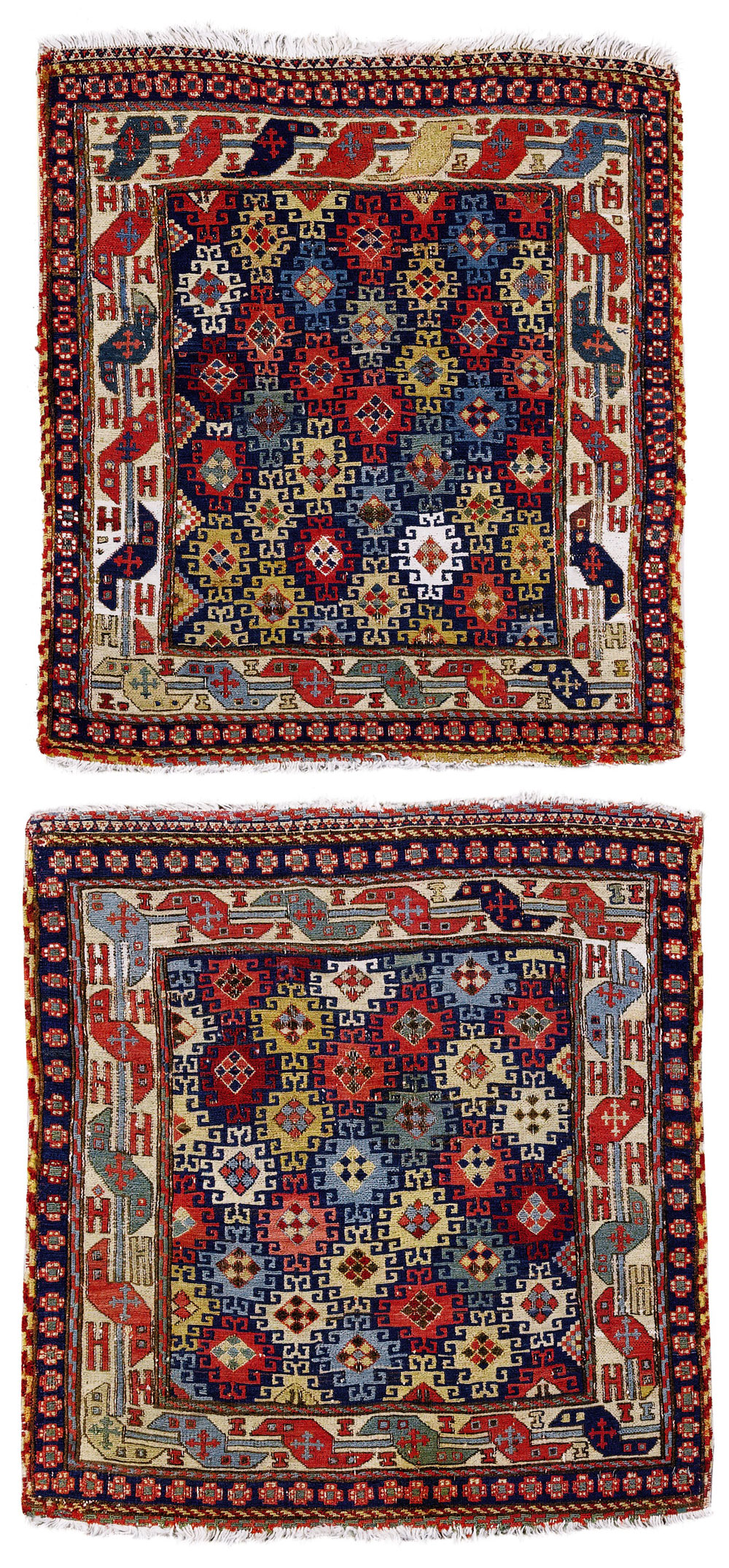
PAIR OF SHAHSAVAN SUMAKH SADDLEBAG FACES, CAUCASUS OR NORTHWEST PERSIA, LATE 19TH CENTURY
wool, cotton highlights, each approximately: 55 by 55cm., 22 by 22in.
Estimate £400 – 800

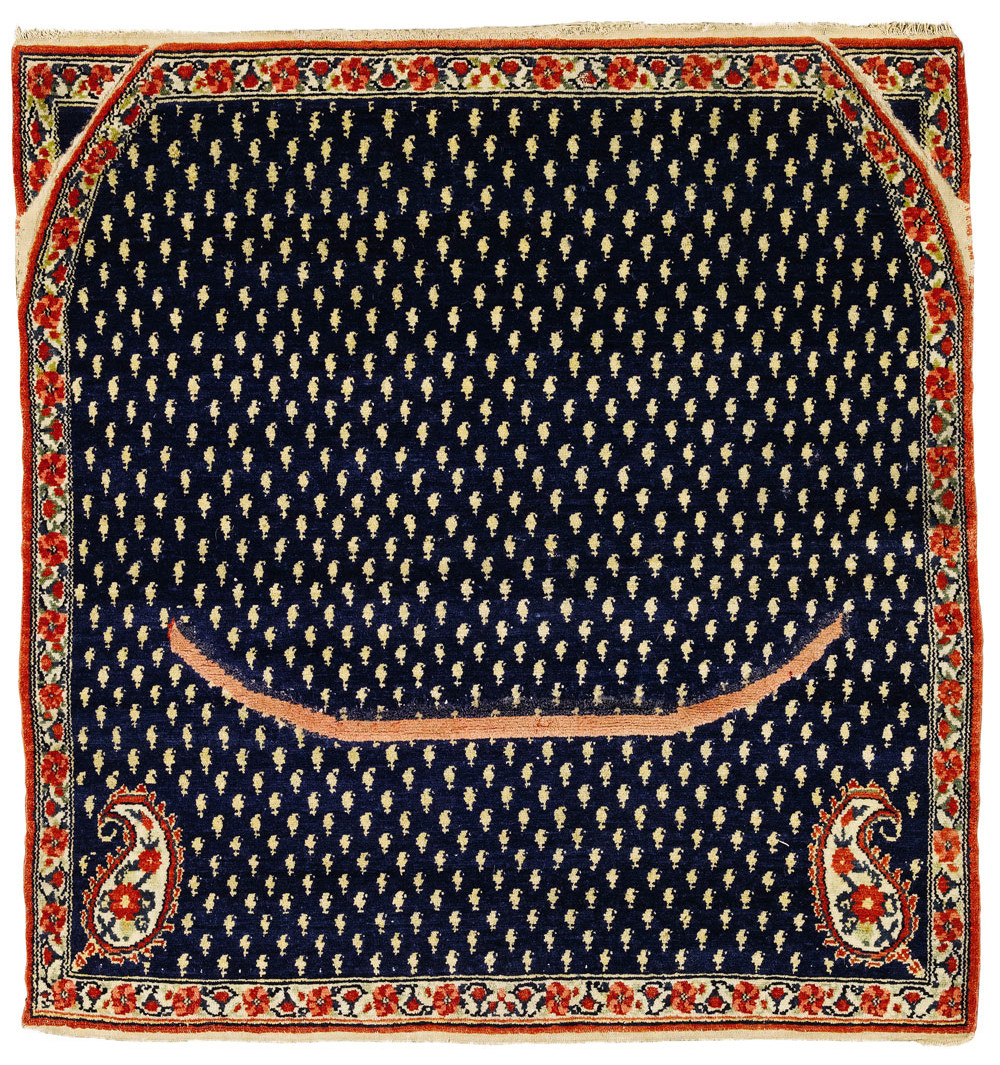
SENNEH SADDLE COVER, WEST PERSIA, 19TH CENTURY
wool pile, approximately: 92 by 86cm., 36 by 34in.
Estimate £800 – 1,200
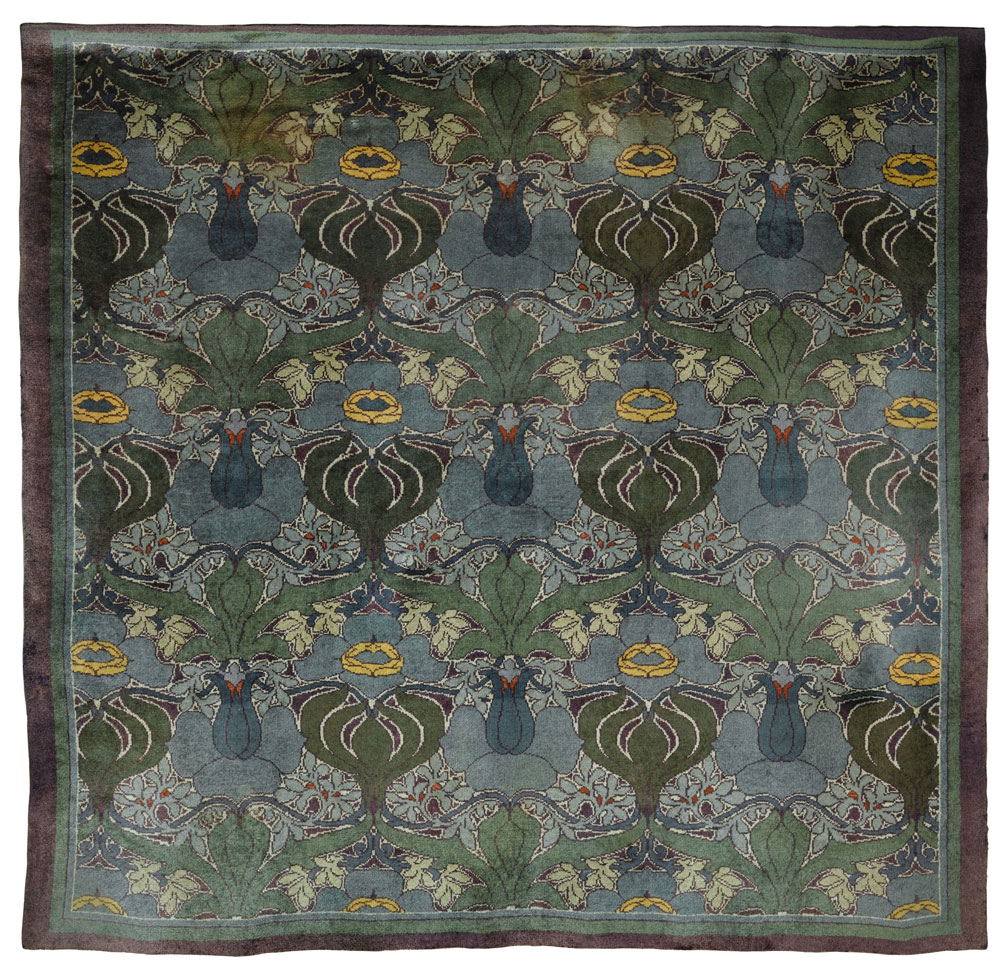
“THE DONNEMARA”, DONEGAL CARPET DESIGNED BY C.F.A VOYSEY, IRELAND, EARLY 20TH CENTURY
Wool pile, 432 by 418cm., 14ft 2in by 13ft 8in.
Estimate £15,000 – 20,000

WILTON RUG DESIGNED BY MARION DORN
Signed Dorn in the weave, wool, the flatwoven field with the design worked in pile
414 by 142cm., 13ft 7in. by 4ft 8in.
Executed circa 1935-1938. Estimate £4,000 – 6,000
Having studied music and architecture in Princeton and Florence, the American found his spiritual home in Greece in the 1960s taking Greek nationality and returning his US passport. He became benefactor to the Stanley J. Seeger Centre for Hellenic Studies a few weeks before his death in 2011. This he saw as his most enduring and pertinent legacy.
Humour and historical relevance were of great attraction to Seeger and his partner, Christopher Cone when acquiring curiosities. The couple were introduced in 1979 by the painter, John Craxton and they spent a 32 years together. Travelling extensively, collecting quietly and becoming the audacious inhabitants of the grandiose Sutton Place in the 1980s (where the Francis Bacon triptych Studies of the Human Body hung in the great hall), in recent years they settled in a much-loved Whitby home.


BEIJING CARPET, CHINA, EARLY 19TH CENTURY
wool pile, approximately: 872 by 387cm., 28ft 7in by 12ft 8in.
Estimate £3,000 – 5,000
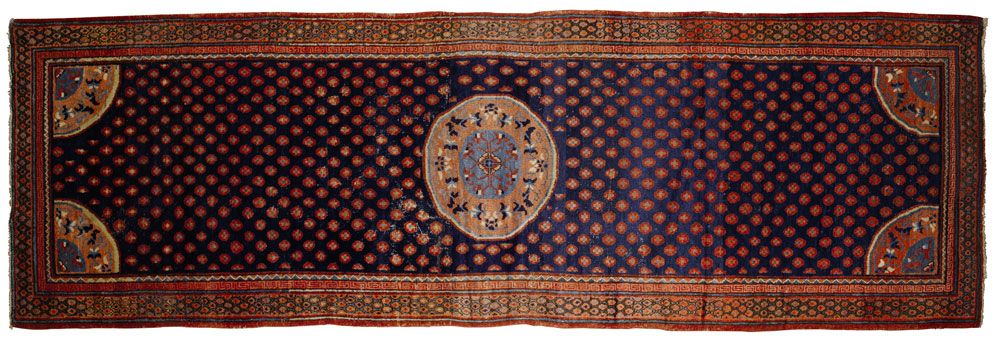
GANSU LONG RUG, WESTERN CHINA, EARLY 19TH CENTURY
wool pile, approximately: 397 by 130cm., 12ft 11in by 4ft 3in.
Estimate £6,000 – 9,000















